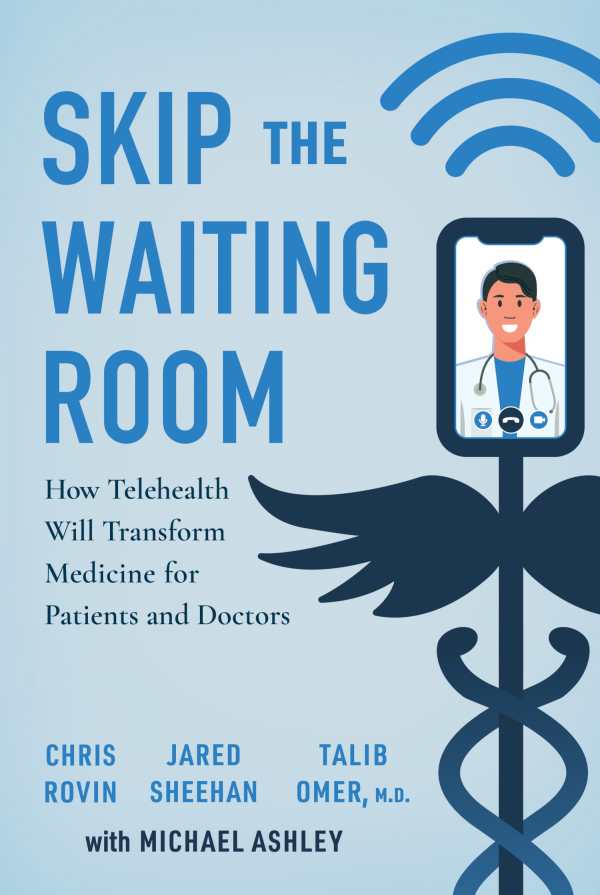Skip the Waiting Room
How Telehealth Will Transform Medicine for Patients and Doctors
- 2024 INDIES Finalist
- Finalist, Health (Adult Nonfiction)
Introducing telemedicine to doctors and patients in terms of its most significant benefits, Skip the Waiting Room is an informative health-care primer.
Chris Rovin, Jared Sheehan, and Talib Omer’s forward-looking health-care book Skip the Waiting Room makes a detailed case for moving toward telehealth.
Both a primer to telemedicine and a practical guide for doctors and patients, the book’s claims are grounded in personal and professional experience as well as case studies and interviews. They draw upon expansions following the COVID-19 telehealth boom and address contemporary challenges like the gutting of health-care staff, noting that hospital economics, inflation, and an aging population led to doctors leaving the profession en masse. Its stories from doctors and patients (sometimes shrouded by the anonymity of assigned pseudonyms) reflect different situations and perspectives. The contributors discuss what types of care telemedicine can deliver, the impact it will have on health care, and how it can expand access for rural and marginalized demographics. Indeed, the book touts telemedical technology as a revolution that that will make seeing a primary care doctor or specialist cheaper, quicker, and more efficient, empowering patients with more health-care options.
The book is divided into sections covering the past, present, and future, explaining the background and trajectory of telemedicine in chronological order. Its chapters drill down on subjects including health-care deserts, wearable medical devices, and government regulation, showing how telemedical advances might supplant other forms of traditional health care. And it enumerates specific cases in which telemedicine is of particular use, as with treating opioid addiction, advancing health equity, and helping underprivileged people be seen efficiently.
However, in presenting telehealth as a panacea to the ailments of contemporary health care, the book’s persuasiveness wanes. It articulates issues with extant systems well but minimizes the potential downsides of its proposed solution. The fact that Rovin, Sheehan, and Omer founded the QuickMD telemedicine platform undermines the book’s sense of objectivity, too, while the self-promotion involved in its inclusion of stories about QuickMD’s development (used as a frequent reference point to tell the broader story of telehealth’s rise) further dilutes it.
While the prose is smooth and self-assured, the book also incorporates more backstory than is necessary into its examples. Still, it builds to an intriguing prediction of what telehealth will look like in the future—including how it will work for astronauts in space, extrapolating from current cases. Its brief summation of how telehealth will create a better tomorrow is a weak conclusion, though.
The health-care manifesto Skip the Waiting Room envisions a rosy future for telehealth.
Reviewed by
Joseph S. Pete
Disclosure: This article is not an endorsement, but a review. The publisher of this book provided free copies of the book and paid a small fee to have their book reviewed by a professional reviewer. Foreword Reviews and Clarion Reviews make no guarantee that the publisher will receive a positive review. Foreword Magazine, Inc. is disclosing this in accordance with the Federal Trade Commission’s 16 CFR, Part 255.

